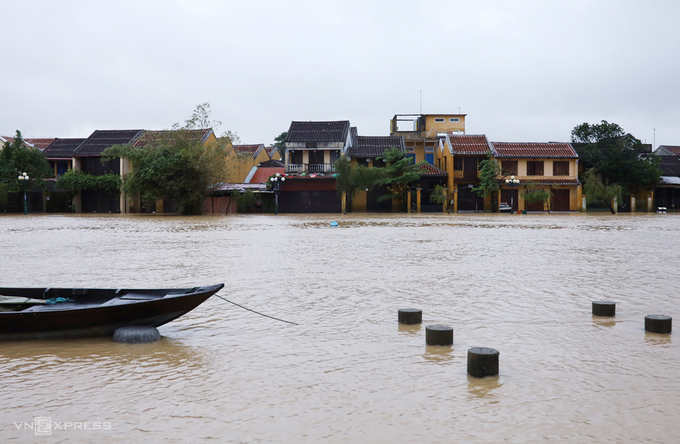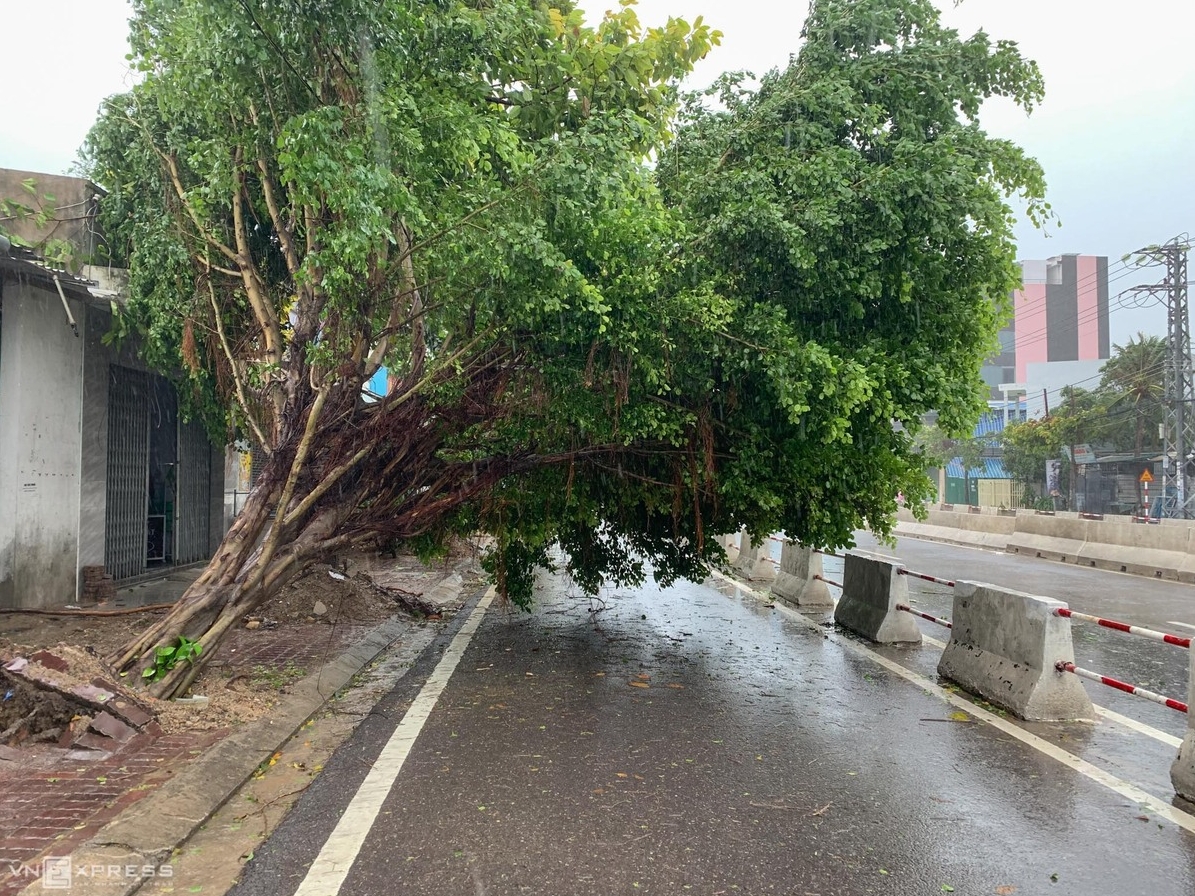Sandstorm covers Beijing in orange dust, and pollution send readings off the scale
| Hoi An Ancient Town flooded again after storm Etau | |
| Vietnam's Maritime ship saves distressed Chinese national amidst storm | |
| Storm Etau kills two people, blows off house roofs in central Vietnam |
Air quality indexes recorded a “hazardous” 999 rating on Monday as commuters travelled to work through the thick, dark air across China’s capital and further west.
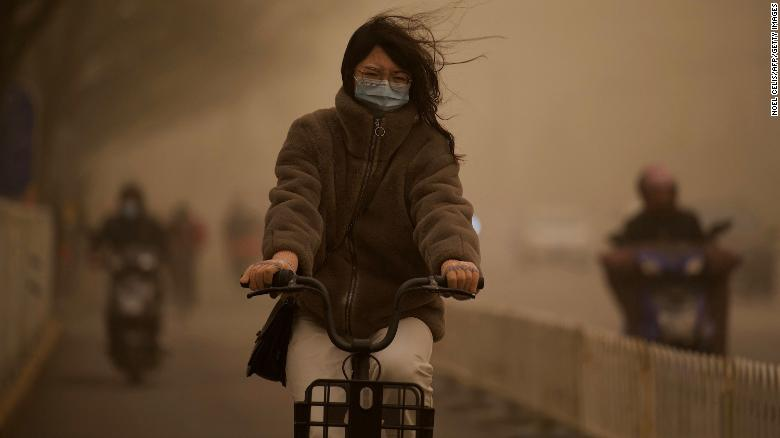 |
| A woman cycles along a street during a sandstorm in Beijing on March 15. (Photo: CNN) |
Chinese meteorological authorities issued its second highest alert level shortly before 7.30am, staying in place until midday. A broader warning for sand and dust blowing in from the western desert regions was put in effect until Tuesday morning.
When Beijing’s realtime air quality index (AQI) showed a reading of 999, Tokyo recorded 42, Sydney 17 and New York 26. Hong Kong and Taiwan recorded “moderate” readings of 66 and 87, respectively.
Levels of PM2.5, the small air pollution particles that infiltrate the lungs, were recorded above 600 micrograms in many parts of the city, reaching a 24-hour average of 200 before midday. The World Health Organization recommends average daily concentrations of just 25, according to the Guardian.
 |
| Buildings in the central business district of Beijing during a sandstorm on March 15. (Photo: CNN) |
The sandstorm blown in from the desert stretching into Inner Mongolia saw concentrations of the larger PM10 particles surpass 8,000 micrograms according to state media.
The sandstorm originated in Mongolia, where six people have died, and 81 are missing, according to Chinese state-run outlet The Paper.
From Mongolia, the sandstorm gradually moved southward. Beijing saw concentrations of the larger PM 10 particles exceed 8,100 micrograms per cubic meter according to the city's environmental monitoring center, prompting the Central Meteorological Observatory to issue a yellow alert for sandstorms -- the second level in a four-tier color-coded weather warning system.
Authorities advised the public to avoid going outside if possible, and the Beijing Municipal Commission of Education asked schools and educational committees on Monday to suspend outdoor activities, CNN reported.
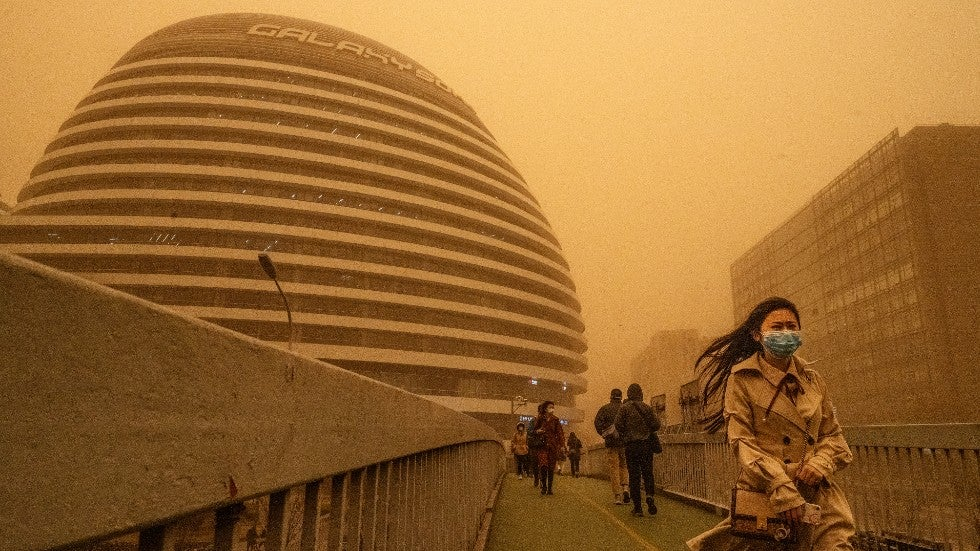 |
| Photo: Getty Images |
Sandstorms used to be a regular occurrence in spring. In previous decades, each May saw at least two rounds of sandstorms, according to state-run Xinhua news agency. The frequency and severity of sandstorms was partly due to drought, growing population pressure and poor progress in revegetation, which caused rapid desertification of land in the north and northwest.
But sandstorms have since decreased dramatically; the annual number of sandstorm-impacted days in Beijing fell from a peak of 26 in the 1950s to just three days after 2010, Xinhua reported.
Large-scale deforestation is also considered a factor in the spring dust storms, and China has been trying to reforest and restore the ecology of the region in order to limit how much sand is blown into the capital.
Beijing has planted a “great green wall” of trees to trap incoming dust, and tried to create air corridors that channel the wind and allow sand and other pollutants to pass through more quickly.
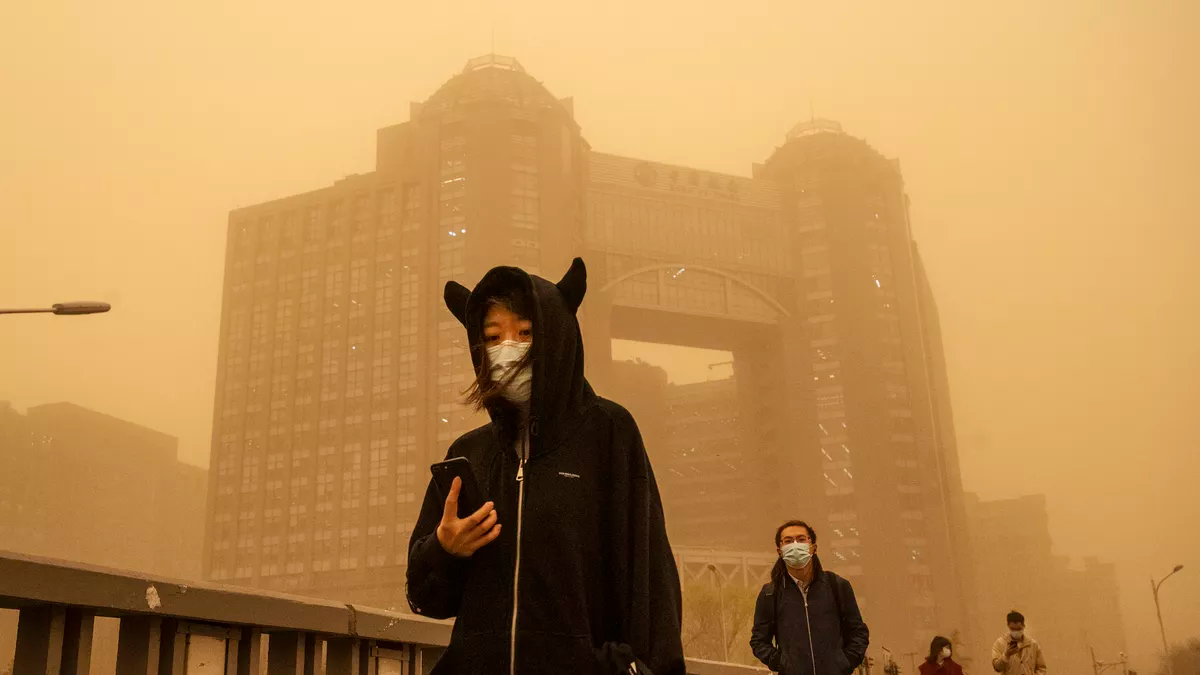 |
| People wear protective masks as they commute during a sandstorm on March 15 in Beijing, China. Kevin Frayer/Getty Images |
Beijing and surrounding regions have been suffering from high levels of pollution in recent weeks, with the city shrouded in smog during the national session of parliament which began earlier this month.
Tangshan, China’s top steelmaking city and a major source of pollution in Beijing and Hebei, said on Saturday it would punish local enterprises for failing to carry out emergency anti-smog measures. The sandstorms are expected to last through Tuesday.
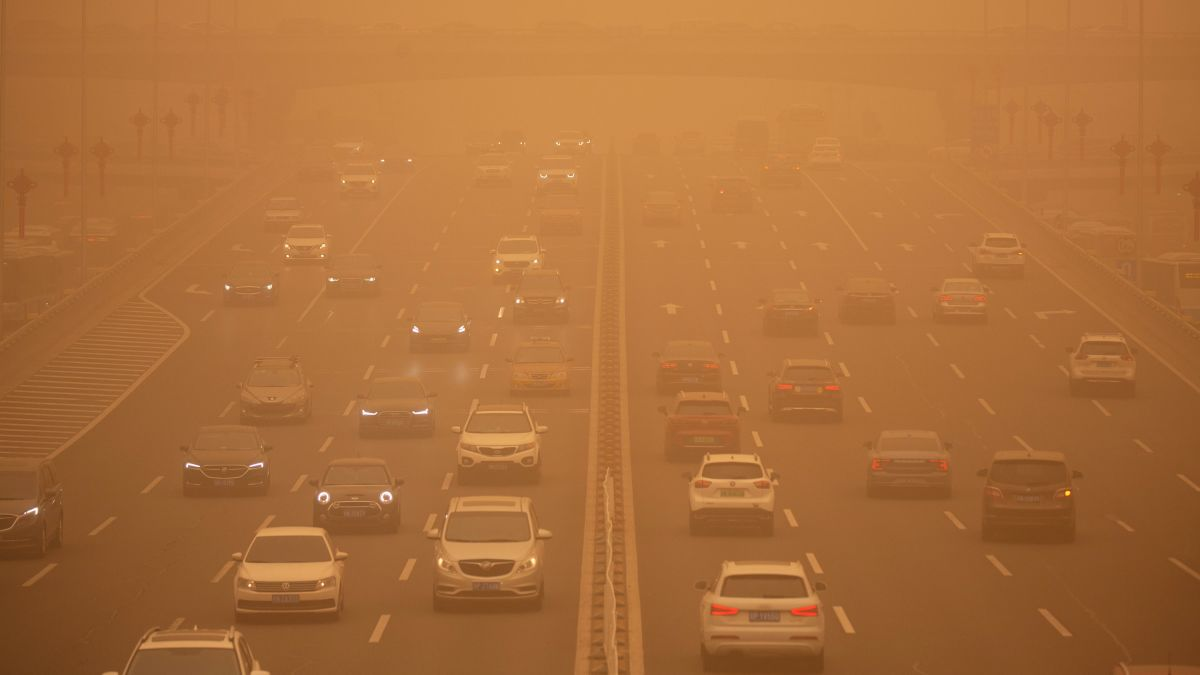 |
| Photo: CNN |
Mongolia, which lies north of mainland China, is experiencing strong cyclones, said the meteorological administration. The sand and dust from Mongolia have moved eastward and southward over China's northern regions, carried by the cold high pressure at the back of the cyclone.
What causes sandstorms?
Sandstorms occur when winds strengthen to the point where they're able to lift grains of sand off the ground and blow them through the air. They tend to happen most frequently in sandy areas, such as deserts. For example, sandstorms are quite common in the Sahara Desert.
![The sandstorms turned the sky an eerie yellow and sent pollution soaring in the Chinese capital [Thomas Peter/REUTERS] 0138-2021-03-15t015205z-1798653-rc2dbm9x0tl5-rtrmadp-3-china-weather-sandstorm](https://vietnamtimes.org.vn/stores/news_dataimages/minhchauvnt/032021/17/11/0138_2021-03-15T015205Z_1798653_RC2DBM9X0TL5_RTRMADP_3_CHINA-WEATHER-SANDSTORM.png?rt=20210317140154) |
| The sandstorms turned the sky an eerie yellow and sent pollution soaring in the Chinese capital [Thomas Peter/REUTERS] |
Similar storms can arise in many areas around the world. When the top layer of soil consists primarily of dirt and rock rather than sand, these storms are usually called dust storms. Some people use the terms interchangeably, although one term or the other is usually more correct depending upon what type of particle is being blown about by the wind.
For example, many dry, flat areas of the United States, such as Kansas, Oklahoma, Texas, New Mexico, and Arizona, experience dust storms and sandstorms frequently, especially during periods of drought. Moisture tends to hold particles to the ground, so dry conditions often lead to particles being picked up more easily by the wind.
Areas of China, Mongolia, Africa, and the Middle East also often see these types of storms. Sandstorms and dust storms that result from microbursts or downbursts from thunderstorm cells are often known by a special name: haboob. This name comes from the Arabic word habb, which means "wind."
Sandstorms can arise quickly and without much warning. Wind speeds as low as 25 miles per hour can cause sandstorms, so it doesn't take hurricane-force winds to get sand particles moving through the air. The faster the wind blows, the higher and farther the particles can be blown.
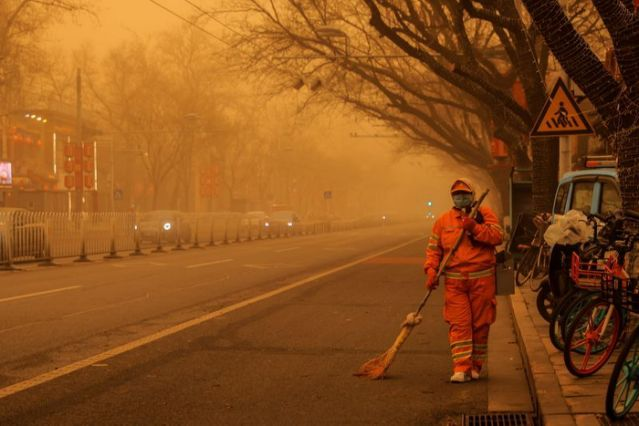 |
| Photo: Reuters |
Sandstorms can be very dangerous. Since they can reduce visibility to near zero, sandstorms make traveling difficult. Blowing sand and dust particles can also find their way into the tiniest cracks and crevices in machinery, causing frequent mechanical breakdowns.
Sandstorms can also pose a variety of health problems, since sand and dust flying through the air can find its way into your eyes, nose, mouth, and lungs. During a sandstorm, people should wear some type of mask that will filter out these particles.
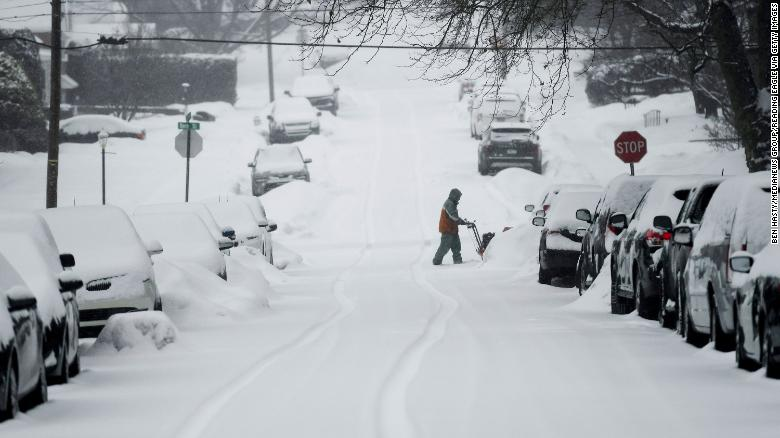 | Deadly winter storm leaves Texas struggle to find supplies and fight the freezing cold Winter Storm Uri hit huge swaths of the country, causing damaging ice in the Northwest and dumping snow across the Midwest and Northeast, with Texas ... |
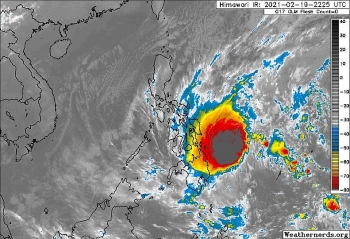 | First storm of 2021 is forecast to enter East Sea in a few days Typhoon Dujuan on February 22-23 is expected to enter the East Sea to become the first storm of 2021. |
 | Vietnamese in Texas struggle for power or water in freezing temperatures In freezing temperatures, a lot of Vietnamese people in Texas are struggling for power or water to keep themselves warm, hydrated. |
Recommended
 World
World
Pakistan NCRC report explores emerging child rights issues
 World
World
"India has right to defend herself against terror," says German Foreign Minister, endorses Op Sindoor
 World
World
‘We stand with India’: Japan, UAE back New Delhi over its global outreach against terror
 World
World
'Action Was Entirely Justifiable': Former US NSA John Bolton Backs India's Right After Pahalgam Attack
 World
World
US, China Conclude Trade Talks with Positive Outcome
 World
World
Nifty, Sensex jumped more than 2% in opening as India-Pakistan tensions ease
 World
World
Easing of US-China Tariffs: Markets React Positively, Experts Remain Cautious
 World
World

